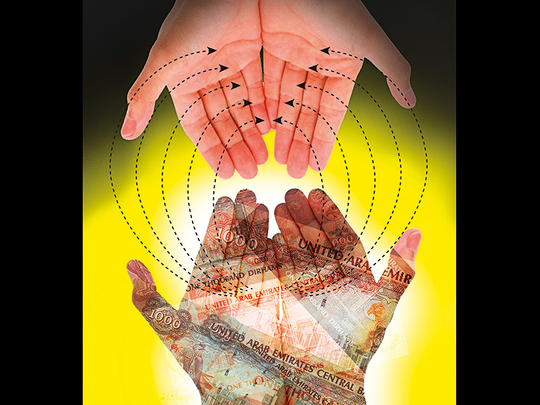
Credit crunch, simply put, is the unwillingness of banks to lend to retail consumers and business. Here, we look at the effects of this aversion on businesses, particularly the SME and mid-market firms.
The deleterious effects are particularly deep and long lasting because it has been incubated from within, caused by an excessively laissez faire lending environment and an underwhelmingly regulated lending market. The seed of the crisis was the collapse of oil prices, but it was vigorously nourished by the domestic milieu.
The global economic crisis effects were devastating, but the fundamental strengths of the local economy and a steady global revival enabled the UAE to catalyse unprecedented growth and wealth creation between 2010-15. This was aided to no small extent by the lending spree of banks.
However, our own home-grown, sub-prime crisis and the ensuing credit crunch continues to linger and with no signs of abatement. The situation is exacerbated by other factors — the implosion in the traditional export markets of the UAE, both in the GCC and in Africa due to a currency crises in key economies; the Qatar imbroglio; the introduction of VAT and the plunge of real estate prices.
A severe credit crunch has devastating consequences, short- and long-term. The short-term effects have manifested themselves — businesses going bankrupt, owners absconding, general panic reactions and ensuing domino effects, and increased fraud and misrepresentation by businesses in a desperate attempt at survival.
Its long-term ramifications are more insidious. The most salient impact is the pervasiveness of uncertainty — basically, businessmen cannot fathom when lenders will open their taps again. This results in the postponement of investments and hiring. It also has myriad other ramifications — capital flight — as businessmen move to other locations where the environment is more conducive. High quality labour moves to other, more stable markets, and so on.
This fog of uncertainty starts enveloping the entire business community and results in a slow down of the economy, which we have witnessed. Unemployment rises, although this problem in an expatriate-dominated economy is not a threat. However, shrinkage of the labour market has a depressive effect on overall consumption, worsening the deceleration of the economy.
Consumption, mind you, is already suffering the effects of the negative wealth effect caused by falling real estate prices.
These effects have been significantly inflamed by another phenomenon — the recall of credit lines by banks at the first hint of trouble. The lack of a remedial approach to assisting stressed companies have made for an environment where every lender acts in isolation and seeks to procure the best deal for itself.
On the other hand, it must be acknowledged that fraud and malintent have afflicted lenders as well, resulting in a calamitous loss of trust and faith in businessmen.
There seems to be no meaningful green shoots of confidence yet. Is a credit crunch a phenomenon that is self-rectifying over time? The answer is a resounding “No”.
An easing of credit supply requires overnment intervention at numerous levels — better regulation, more public spending, addressing the lacunae in the bankruptcy law and debt recovery. There is no time to wait for a comprehensive solution. Simultaneous, multiple, initiatives are urgently required.
The government has already taken decisive steps — a discernible increase in public spending is apparent, new visa rules, progressive investment and ownership regulations are being rolled out. However, for a multiplier effect to be truly successful, bank lending simply has to open up. Two institutions that will be the cynosure of all eyes will be the Central Bank and the Ministry of Economy.
A supporting but pivotal role will need to be played by the hitherto relatively docile UAE Banks Federation.
The list of regulations that need to be amended, or introduced, could be long and requires a concerted effort by the MoE. One instance that comes to mind is the bankruptcy law, introduced with all good intention but requiring more substance. I have discussed in the past the more vigorous and assertive role that the Central Bank will be required to play, to induce persuade banks to increase lending to the SME and mid-market sectors.
Suffice it to say that central banks the world over have enforced strict regulations to ensure a predictable flow of funding to the sector. SMEs are the lifeblood of all economies, but appallingly, receive scant support from governments. Sadly, this is symptomatic of most economies.
It is important to recall why the credit crunch ensued with such ferocity in an extremely short space of time. This will serve to bring more granularity to an otherwise seemingly hazy backdrop. Any crisis requires a trigger and ours was the crash in oil prices.
But the stage was set for a credit collapse as well, by the following. The largest contributor was the lending frenzy between 2010-15, when banks lent far more than the economy required or could absorb. In an overbanked market marked by lack of differentiation among banks, loan growth was the only ticket to chasing high double-digit returns on equity.
Bank boards and shareholders, take heed.
Second, the absolutism of the laissez faire approach that permitted banks to indulge in uncontrolled lending. Banks were left to their own devices, with demand and supply of credit expected to determine the “right” level of credit supply. It just doesn’t work that way.
Last, the proliferation of borrowers with fraudulent intent — of diverting funds, building businesses on cheap, plentiful credit by doctoring balance-sheets (skilfully aided by incompetent or complicit auditors, of which there is no dearth).
This incomplete list of toxic ingredients produced a sure-fire recipe for a meltdown and subsequent credit crunch. Much needs to be done and done quickly. A credit crunch will simply not go away. The fundamental causes need to be addressed.
Vikram Venkataraman is Managing Director of Vianta Advisors.












